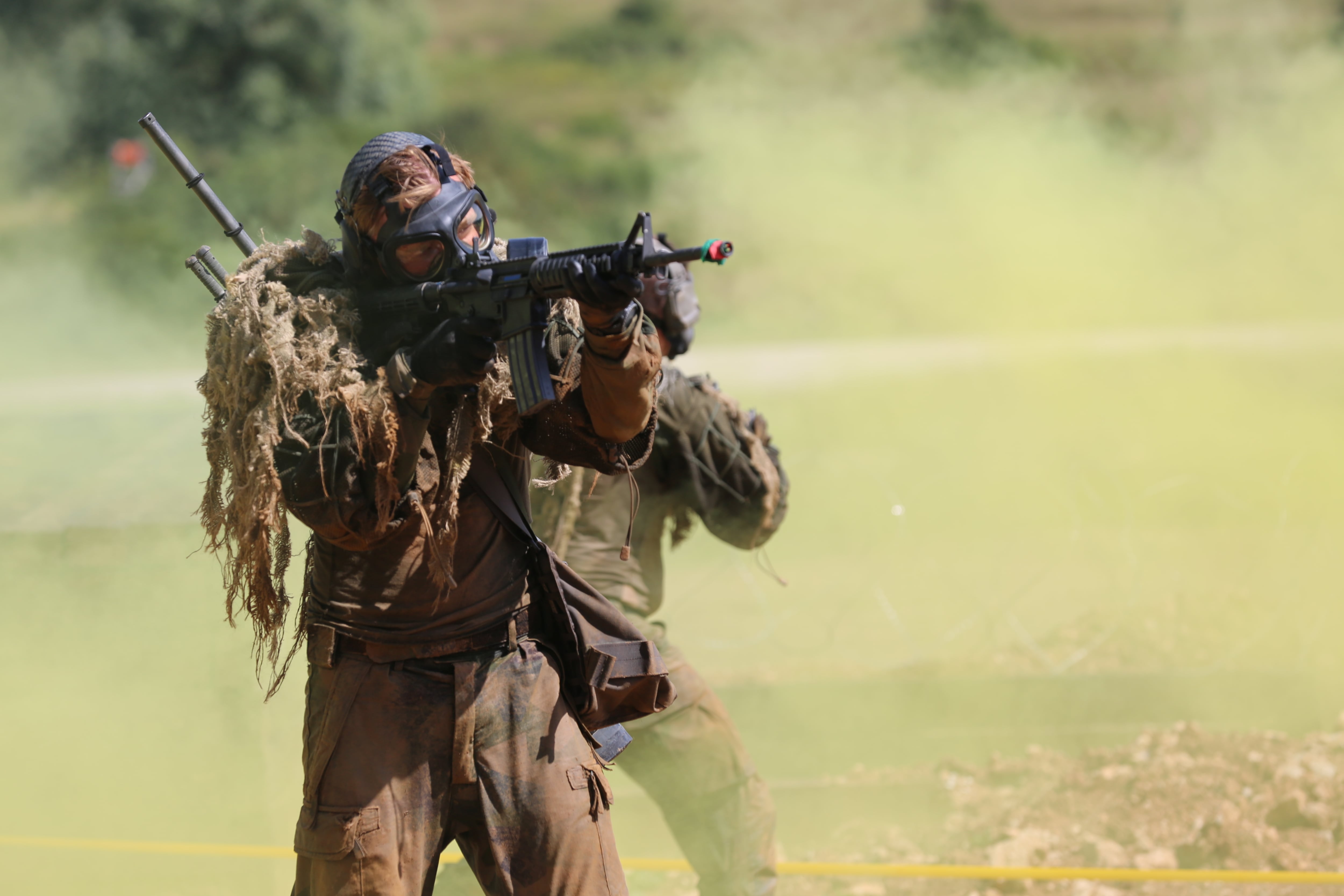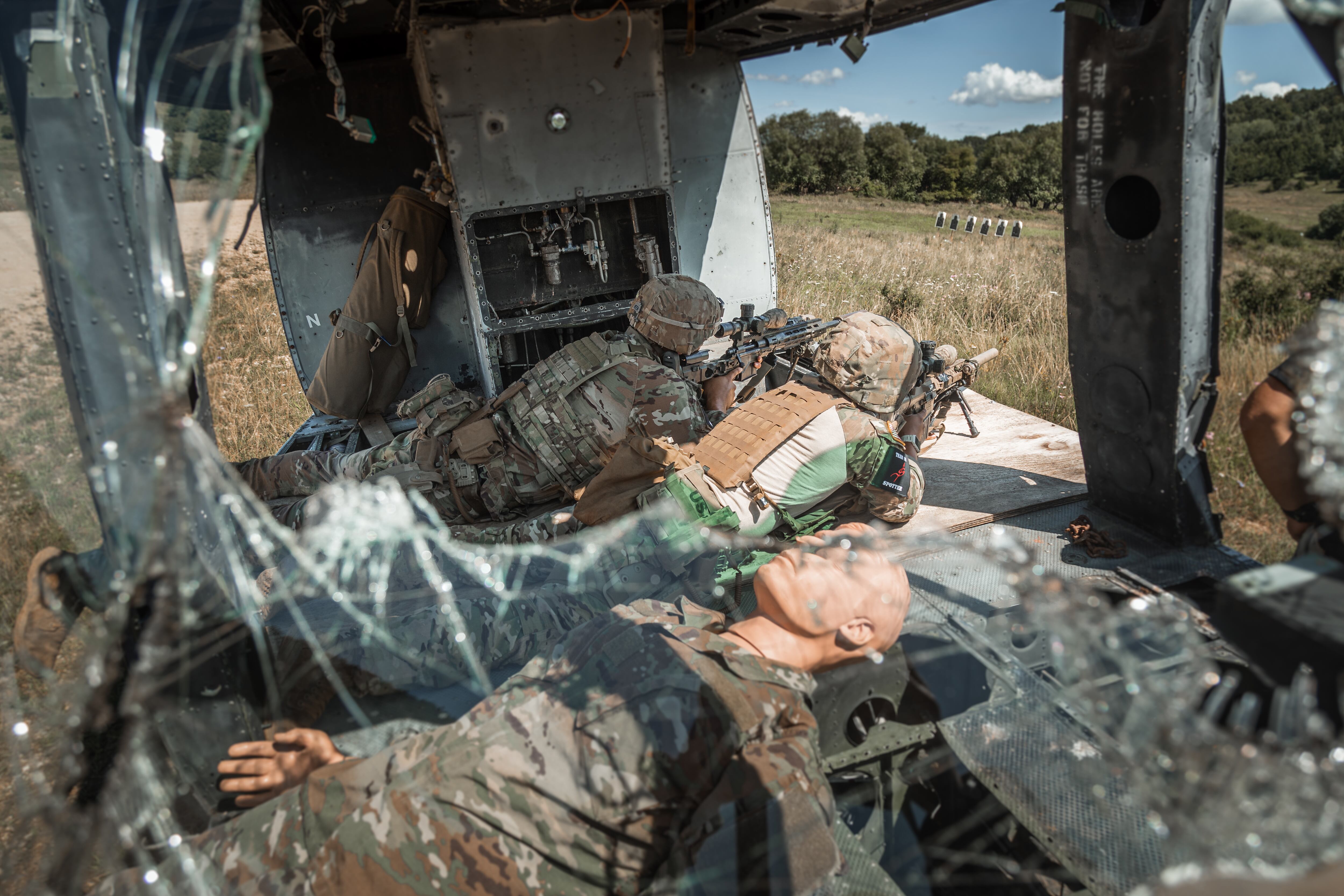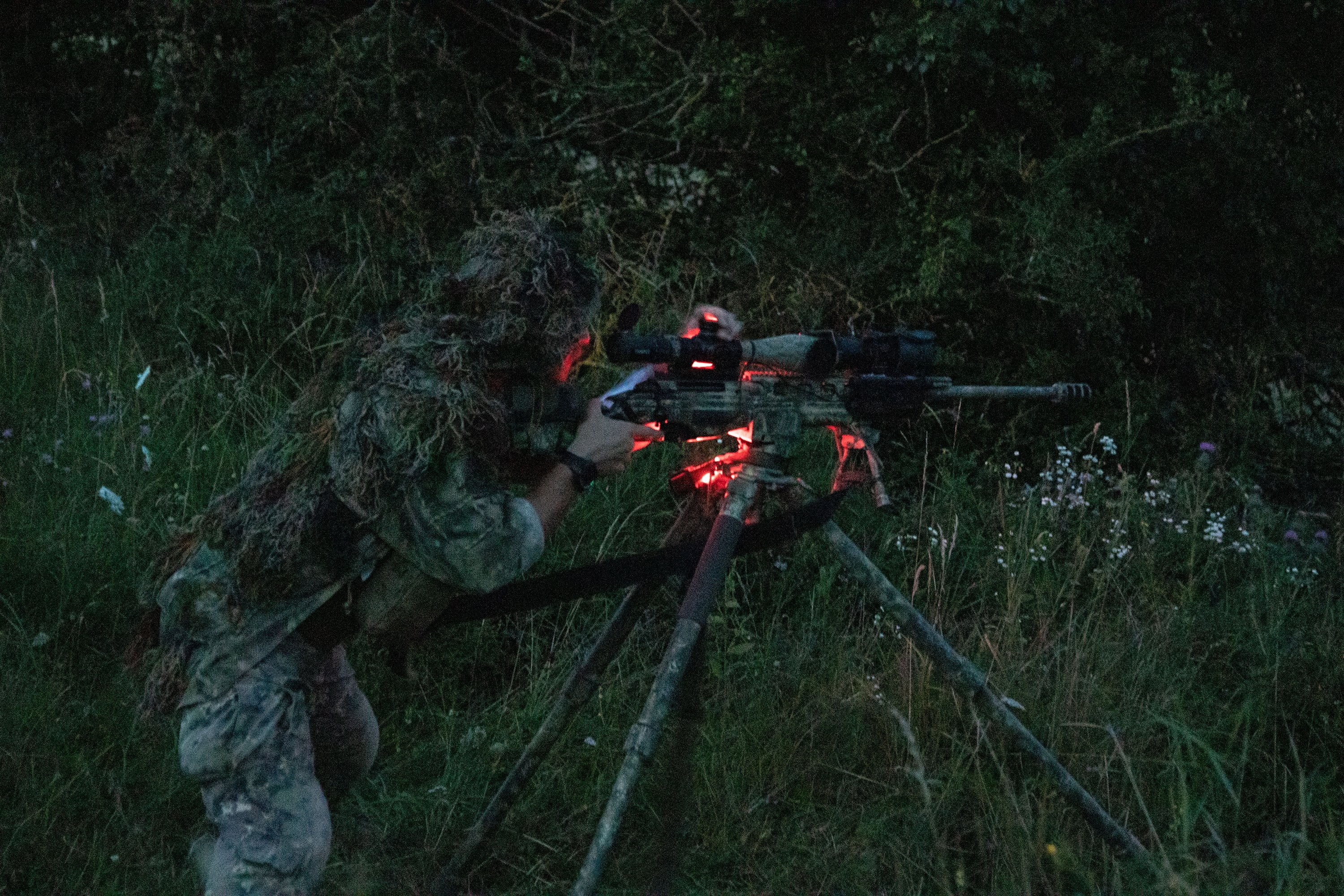Handpicked marksmen from the Army and countries across Europe are putting their skills to the test this week in the European Best Sniper Team competition at the Hohenfels Joint Multinational Readiness Center in Germany.
Army Times reviewed the competition handbook and spoke with its director and organizer, Command Sgt. Maj. Michael Sanchez, to get an inside look at the event and how the teams are being evaluated.
The competition began Sunday, and the final stages will conclude on Friday evening. U.S. Army Europe and Africa and the 7th Army Training Command are running the multinational training event.
More than 25 sniper teams from 15 nations compete annually, according to the U.S. Army.

Sanchez explained that the competition is designed to test the mental, physical, and emotional endurance of the teams in addition to their sniper tasks.
The competitors are expected to demonstrate several of tactical and technical skills, Sanchez said, including field firing, advanced marksmanship, field craft, team communication, sidearm shooting and land navigation.
Sanchez described the competitors as “true athletes,” with a sense of competitive camaraderie in the face of difficult events.
The competition stages involve day and night shooting, including a “1917” training lane where teams crawl through muddy trenches before they don their gas masks and sprint through smoke into the open while firing at targets.

Sanchez confirmed that the lane utilized live CS gas in order to ensure the snipers and spotters had properly donned their masks.
Another portion of the competition, called “Mogadishu,” has competitors rapidly engage targets from the wreckage of a helicopter.
That stage simulates the heroics of Delta Force snipers and Medal of Honor recipients Master Sgt. Gary Gordon and Sgt. 1st. Class Randy Shughart. Both men died in Mogadishu, Somalia, in 1993 while defending the pilot of a downed MH-60 Black Hawk helicopter.
Sanchez said his team of American and Latvian NCOs designed the event to be an immersive competition that utilized Joint Multinational Readiness Center resources to create a one-of-a-kind training experience for the snipers representing their countries. Bringing them all together makes for a more efficient training experience.

“It’s a very challenging piece for any commander or senior enlisted leader…[to arrange] specific training for [snipers] because you can’t just throw a training event for just a handful of individuals,” Sanchez explained. “We owe it to commanders to come up and help them produce training environments to maximize all of their platforms that they have at their disposal.”
Ultimately, Sanchez explained, the event is about more than just friendly competition — it’s about building cooperation between the United States, NATO and other European nations.
“When we talk about interoperability, we’re not just talking about communications processes,” Sanchez said. “We’re talking about [bringing together] the different capabilities that those [snipers] provide with their specific teams and skillsets, and then look at the similarities we have so that we can combine total lethality across the force.
“At the end of the day, it brings esprit de corps, trust and a complete shared understanding,” Sanchez added.
Davis Winkie covers the Army for Military Times. He studied history at Vanderbilt and UNC-Chapel Hill, and served five years in the Army Guard. His investigations earned the Society of Professional Journalists' 2023 Sunshine Award and consecutive Military Reporters and Editors honors, among others. Davis was also a 2022 Livingston Awards finalist.





